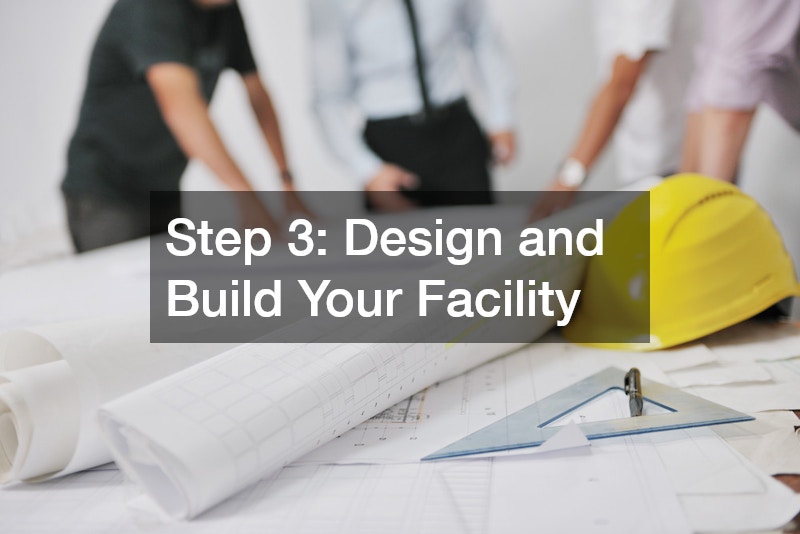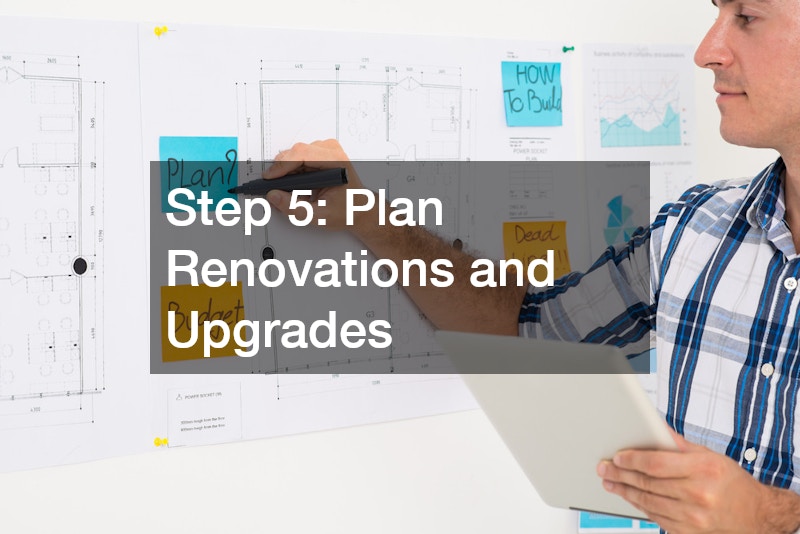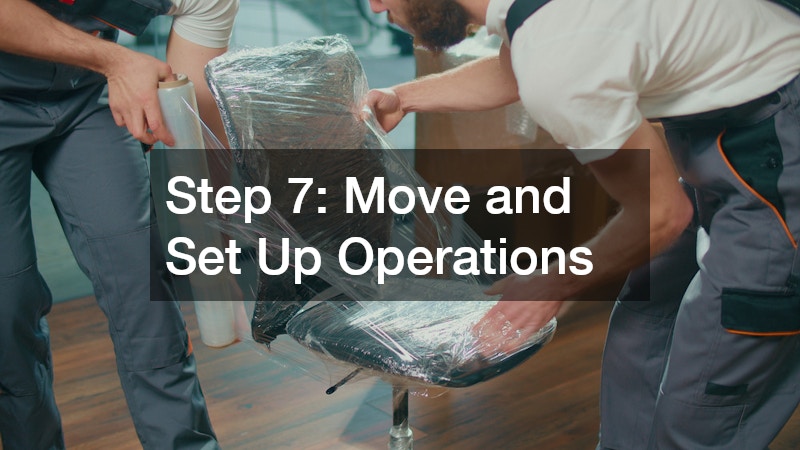Expanding your business to a new location is an exciting opportunity, but it comes with its fair share of challenges. Beyond simply moving, you must carefully evaluate potential properties, plan layouts, address infrastructure requirements, manage logistics, and ensure compliance with local regulations. Every step affects operational efficiency, employee productivity, customer experience, and ultimately, profitability. Launching in a new city or market without a comprehensive plan can lead to costly mistakes, delayed openings, and operational inefficiencies.
A strategic approach is essential. From choosing the right property to finalizing operational systems, this process requires meticulous attention to detail and thoughtful planning. Utilizing professional services across multiple disciplines—from construction to moving, flooring, and safety—can dramatically reduce stress and improve outcomes. This guide outlines ten actionable steps for business owners, each designed to address a critical aspect of launching in a new location. Implementing these steps will ensure that your new facility is functional, safe, and optimized for growth, allowing your business to hit the ground running in a new market.
Step 1: Evaluate Potential Locations

Choosing the right location is one of the most important decisions for your expansion. A property’s success potential depends not only on price and size but also on accessibility, visibility, and proximity to your target customers and suppliers. Demographic research can help you identify areas with sufficient market demand, while evaluating competitors provides insight into how saturated a market might be. Foot traffic, parking availability, and public transport accessibility are additional factors that can make or break your location.
Searching for commercial land for sale allows you to find properties that suit your long-term operational goals. Beyond location, it’s important to consider utility access, zoning restrictions, and future growth potential. Partnering with commercial real estate experts can help you identify hidden opportunities and assess risks before making a financial commitment. The right property forms the foundation for everything else, including interior layout, equipment placement, and overall workflow. A poor choice at this stage can have lasting negative impacts on costs, operational efficiency, and customer experience. Early, thorough evaluation ensures your business has the space, infrastructure, and market access necessary for a successful launch.
Step 2: Plan Your Space Layout
Once you’ve secured a location, careful planning of the internal layout is essential. Every square foot counts in maximizing operational efficiency, safety, and employee productivity. Consider how employees, customers, and equipment will move through the space, and how storage, offices, or production areas will interact. Flexible layouts that anticipate future expansion allow your business to grow without costly renovations later.
Using space management systems can provide detailed insights into traffic patterns, storage usage, and workflow efficiency. These systems allow you to optimize office areas, customer-facing spaces, or warehouses by identifying bottlenecks and underutilized areas. For example, a retail store can benefit from a layout that encourages customer exploration, while a manufacturing facility requires strategic placement of machinery to maximize safety and productivity. Professional guidance during this phase ensures that your space is not only functional but also scalable, reducing the likelihood of operational disruptions as your business grows. Efficient layouts save time, reduce operational friction, and create a more pleasant environment for employees and visitors alike.
Step 3: Design and Build Your Facility

Designing a facility that is both functional and visually appealing is critical. The layout, finishes, lighting, and workflow should reflect your brand, meet operational needs, and comply with safety regulations. Well-executed designs can enhance employee productivity, improve customer experience, and reduce ongoing maintenance costs.
Collaborating with commercial design builds ensures your facility is professionally planned from concept to completion. These firms combine architecture, construction, and project management, delivering cohesive results on time and within budget. For example, an office may need ergonomic furniture placement, clear signage, and optimized lighting, while a retail space may prioritize customer flow and display areas. Design-build specialists coordinate construction schedules, manage contractors, and ensure compliance with all codes. Investing in professional design not only supports operational efficiency but also elevates the brand image, creating a space that impresses clients, employees, and partners from day one.
Step 4: Ensure Structural Integrity
A building’s structural integrity is vital to protecting your investment and ensuring employee safety. Issues with roofing, insulation, or foundational elements can lead to energy inefficiency, safety hazards, and costly repairs. Unnoticed problems can compound over time, impacting operations and creating unexpected downtime. Hiring a commercial roofing company ensures that your roof is durable and weather-resistant, reducing the risk of leaks or damage. They also help identify weak spots or potential issues early, preventing costly repairs down the line. Regular maintenance ensures your roof remains reliable and extends its lifespan.
Structural inspections should cover walls, floors, ceilings, and mechanical systems to prevent future disruptions. Addressing these areas proactively avoids emergency repairs, increases the longevity of your facility, and maintains operational continuity. Be sure to contact a local commercial insulation company for solutions that improve temperature control, reduce energy costs, and enhance comfort for employees and customers. Ensuring the structural health of your facility before occupancy is an investment in safety, efficiency, and long-term success.
Step 5: Plan Renovations and Upgrades

Many properties require adjustments to meet business-specific needs or branding goals. Renovations may include installing additional offices, redesigning floor layouts, or updating finishes to align with company standards. Well-planned upgrades minimize disruptions and enhance operational efficiency.
Working with commercial renovations professionals ensures modifications are completed to code, on schedule, and within budget. For instance, adding partitions for private offices or creating larger open workspaces can improve collaboration and privacy. Professionals can also advise on energy-efficient upgrades, lighting enhancements, and accessibility improvements. Proper renovation planning ensures that your business operations are not interrupted, while the finished space reflects professionalism and supports employee productivity. Thoughtful upgrades also add long-term value to the property, preparing it for future use or resale.
Step 6: Install Flooring and Interior Finishes
Flooring affects both functionality and aesthetics. High-traffic areas require durable surfaces, while comfort and visual appeal matter in customer-facing zones. Choosing the right materials prevents costly repairs and replacements down the line.
Commercial carpet installation offers a practical solution in offices or hospitality spaces, providing sound dampening, comfort, and a professional appearance. Proper installation prevents uneven surfaces, reduces wear, and extends the lifespan of your investment. Selecting the right carpet type, pattern, and color can also reinforce branding and create a welcoming atmosphere for visitors. Professional installation ensures durability, minimizes maintenance needs, and supports a polished look that enhances your overall facility image. Flooring should be selected strategically based on usage patterns, cleaning requirements, and long-term maintenance considerations.
Step 7: Move and Set Up Operations

Relocating or opening a new location requires meticulous planning to avoid operational downtime. Moving inventory, equipment, and furniture must be done safely and efficiently to prevent damage or delays.
Hiring commercial movers is a practical solution to ensure a smooth transition. Professional movers coordinate logistics, pack equipment, and manage heavy items safely. For example, sensitive electronics, office machinery, or specialized equipment require careful handling to avoid costly replacements or downtime. Proper scheduling, route planning, and coordination with staff ensure minimal disruption to daily operations. By delegating this complex task to professionals, business owners can focus on staff training, client communications, and other critical operational preparations. Efficient relocation ensures your business can resume operations quickly and maintain customer satisfaction during the transition.
Step 8: Install Safety and Security Features
Safety and security are critical considerations when opening a new facility, as they directly impact employee well-being, client confidence, and the protection of valuable assets. A secure environment reduces the risk of accidents, theft, and liability issues while fostering a sense of trust and professionalism. Effective security combines multiple layers, including physical barriers, monitoring systems, and clearly defined property boundaries, to create a comprehensive approach that addresses a variety of potential risks.
Physical security measures, such as gates, locks, and controlled entry points, help regulate access and prevent unauthorized individuals from entering sensitive areas. Installing commercial fences can clearly delineate property lines, safeguard outdoor assets, and improve overall site visibility. Monitoring systems, including cameras, alarms, and motion detectors, provide real-time oversight, deter criminal activity, and allow quick responses to potential incidents. For employees and clients, visible security features can create a sense of reassurance and encourage safe behavior within the facility.
Integrating safety protocols with training programs ensures that staff know how to respond in emergencies and understand the facility’s security layout. Regular inspections and maintenance of security systems prevent malfunctions that could compromise protection. A well-executed safety and security plan not only safeguards people and property but also supports operational continuity, minimizes liability risks, and contributes to a professional and trustworthy business environment. Investing in comprehensive security measures from the start sets a strong foundation for long-term success in a new location.
Step 9: Upgrade Vertical Transport and Accessibility
For multi-level facilities, efficient vertical transport is a crucial component of both functionality and safety. Elevators, lifts, and ramps allow staff, clients, and inventory to move smoothly between floors, reducing bottlenecks and improving workflow. Without reliable vertical transportation, employees may waste time navigating stairs with heavy equipment, while customers or visitors may struggle to access certain areas, creating frustration and safety concerns.
In addition to convenience, accessibility is a key consideration. Facilities must comply with regulations such as the Americans with Disabilities Act (ADA), ensuring that individuals with mobility challenges can access all areas safely and comfortably. Properly designed ramps and elevators not only meet legal requirements but also demonstrate a commitment to inclusivity, making the facility welcoming to everyone.
Partnering with commercial elevator services ensures that installations are safe, efficient, and reliable. Professionals can assess the facility’s layout, anticipated traffic, and weight requirements to recommend the most suitable equipment. They also provide maintenance and inspections to prevent downtime or accidents. For businesses handling heavy inventory, specialized lifts or freight elevators can streamline operations, reduce employee strain, and improve overall productivity. Thoughtful vertical transport planning enhances operational efficiency, supports staff performance, and contributes to a positive experience for all visitors and employees within a multi-level facility.
Step 10: Final Touches and Operational Readiness
Before opening, finalize all operational systems, staff training, and finishing touches that prepare the facility for daily operations. This includes interior signage, equipment calibration, and staff orientation.
Ensuring everything from commercial carpet installation to renovations, safety systems, and layout is complete allows your business to open efficiently. Conduct walkthroughs to confirm functionality, address minor repairs, and make adjustments for workflow improvements. Completing these steps ensures that the new location is safe, operationally ready, and aligned with company standards. A well-prepared launch reduces stress, enhances first impressions for customers and staff, and positions the business for sustained success in the new market. Thoughtful preparation at this stage solidifies the investment made in time, money, and resources, ensuring that the expansion achieves its intended goals.
Launching a business in a new location is a complex endeavor that demands meticulous planning, informed decision-making, and the strategic use of professional expertise. Every stage of the process—from identifying suitable commercial land for sale to designing and constructing the interior, handling renovations, installing durable flooring, coordinating a move, and implementing security measures—directly impacts operational efficiency, employee productivity, and long-term profitability. Skipping steps or underestimating the scope of work can lead to costly delays, compliance issues, and reduced customer satisfaction.
Engaging the right professionals at each stage makes a significant difference. For example, commercial movers ensure equipment, furniture, and inventory are transported safely and efficiently, minimizing downtime. Working with commercial design builds allows for a cohesive, functional, and brand-aligned facility, while a commercial roofing company and commercial insulation company safeguard the structure, improve energy efficiency, and prevent future maintenance problems. Even small details, such as proper flooring installation or planning for vertical transport, contribute to smoother day-to-day operations.
Following these ten carefully outlined steps provides a roadmap for launching in a new market with confidence. It helps mitigate risks, streamline the transition, and create an environment that supports growth, compliance, and long-term success. By taking a structured approach and leveraging specialized expertise, business owners can transform a potentially overwhelming process into a well-organized, profitable expansion, ensuring their new location operates at peak efficiency from day one. This strategic approach not only secures immediate operational readiness but also positions the company for sustainable growth and a strong competitive advantage in its new market.
